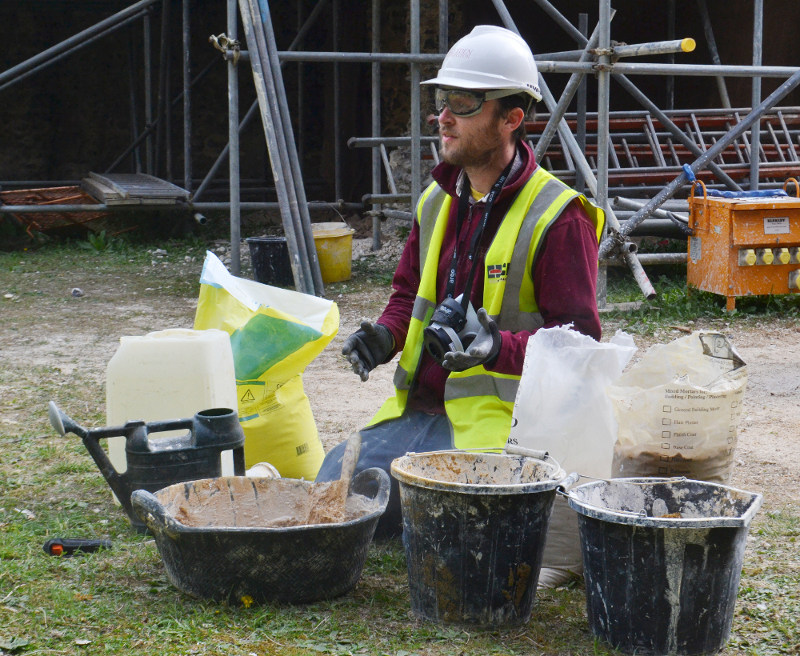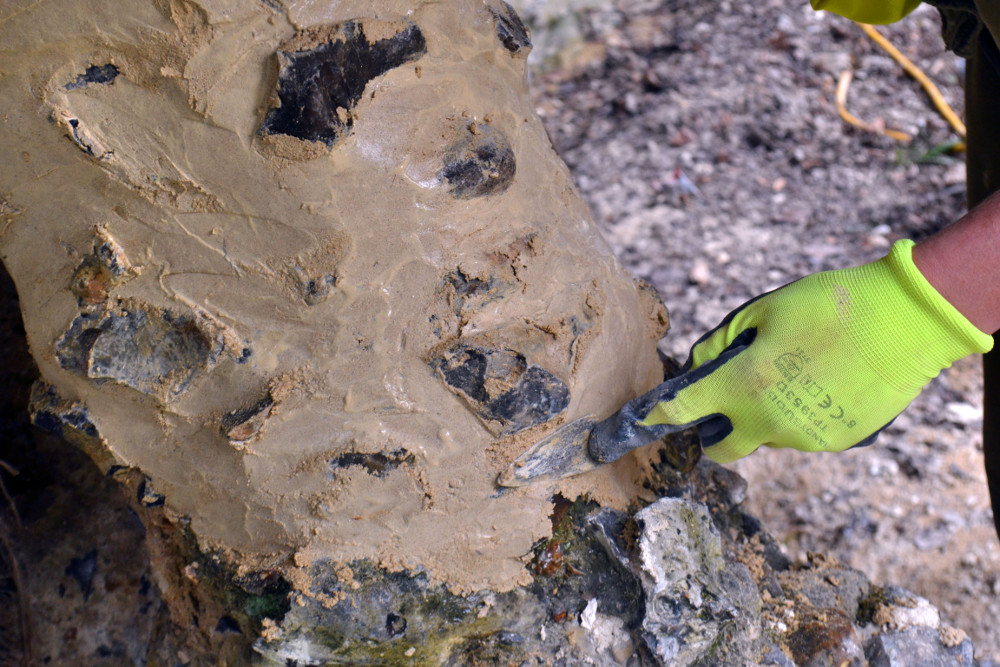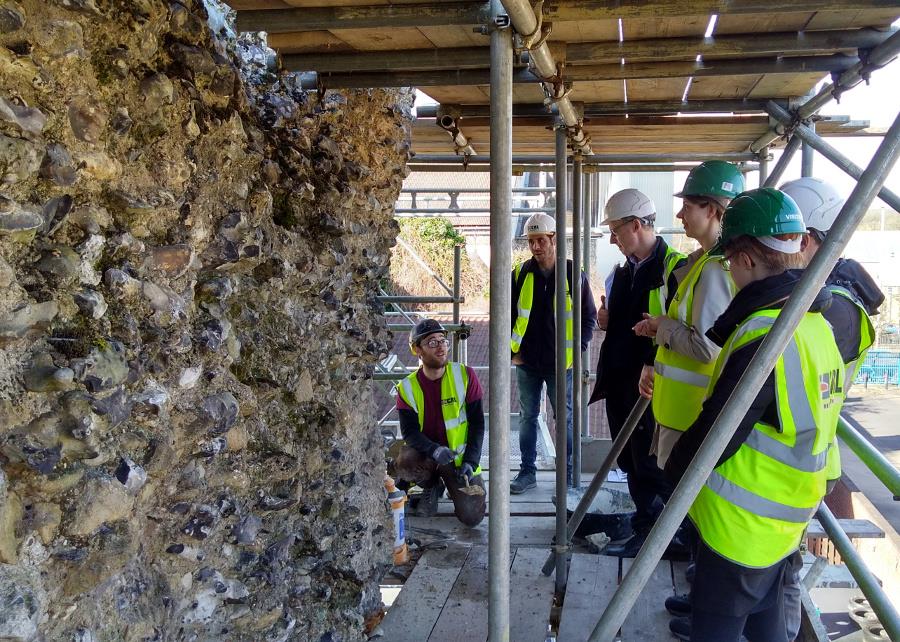Barnaby Wheeler, Senior Architect, Heritage Architecture, Reading Hampshire Property Partnership
William Skinner, Mason and Site Manager, Cliveden Conservation Ltd, CRL Restoration Ltd Main Contractor
In 2009 the ruins of Reading Abbey closed to the public. Their deteriorating condition led to large pieces of flint falling from the walls – not something you would want if you were an unsuspecting, passer-by.
In February 2017 a specialist conservation team took over the Abbey ruins. Their job is to conserve the ruins and to prevent their further deterioration. There are three key elements to their conservation: add soft capping to the tops of the walls to prevent water penetration, ‘re-point’ the stones to prevent further flint falling and restore fallen flint to improve stability.
Before starting the conservation at Reading Abbey we faced a tough question – how do we conserve the ruins without creating more damaging problems?
We needed a mortar that would be genuinely compatible with the surviving rubble walls of the ruins. It needed to be permeable and self-healing. We decided to return to the methods used in the original construction of the Abbey almost 900 years ago. As far as is practical with modern materials, this means a return to a simple ‘hot’ mix of quicklime and sand (in this case we refer to the material name for calcium oxide, not the green citrus fruit). This is hot mixed lime mortar.

Hot mixed lime mortar demonstration.
Quicklime is the direct product of lime stone burning. When it comes in contact with water it reacts, or ‘slakes’, and turns into a lime binder which holds the sand aggregate together. By delaying this slaking process to the moment when the lime and sands are being mixed to make mortar, the heat generated by the chemical reaction helps to make the mortar tenacious and ‘sticky’ which is perfect for the tricky work of consolidating the irregular and crumbling surfaces of the Abbey ruins.

A mason using hot mixed lime mortar at Reading Abbey.
For those of you who are not accustomed to building walls, mortar is the mixture that sticks bricks or stones together. Modern building mortar is generally made with sand and cement. This produces a strong but brittle bonding material for masonry walls. It is also quite impermeable so water cannot pass through. You would think that having a watertight wall joint would be useful, however it can actually cause huge damage. This type of mortar can stop a saturated wall drying out effectively. As a result this leaves the wall vulnerable to frost damage and differential erosion (where the wall is worn away more severely in certain areas). This is generally what has happened when you see an eroded wall face where the mortar joints are standing further out, as the brick has worn away at a quicker rate.
Traditionally walls were built with mortar made from sand, chalk, stone dust or earth mixed with lime. Lime is often obtained by heating limestone. This type of mortar slowly hardens as the lime naturally reacts with carbon dioxide. When greater strength and water resistance is required, such as when building foundations in wet ground, hydraulic limes can be used. These are taken from lime stone with naturally occurring clay impurities. These clay impurities can create a stronger mortar that can set in wet conditions.
Industrially produced Natural Hydraulic Lime has been commonly used in mortar for conservation work since the 1970s. This was an attempt to match the strength and moisture permeability of traditional brick and stone work. However it turns out that in time, hydraulic lime mortar can end up being as hard and impermeable as cement.
We hope that by taking some tips from our medieval forbears the ruins of Reading Abbey will be protected for centuries to come!

Staff look at conservation work at Reading Abbey.
The conservation work on the ruins is part of the Reading Abbey Revealed project supported by the Heritage Lottery Fund and Reading Borough Council.





